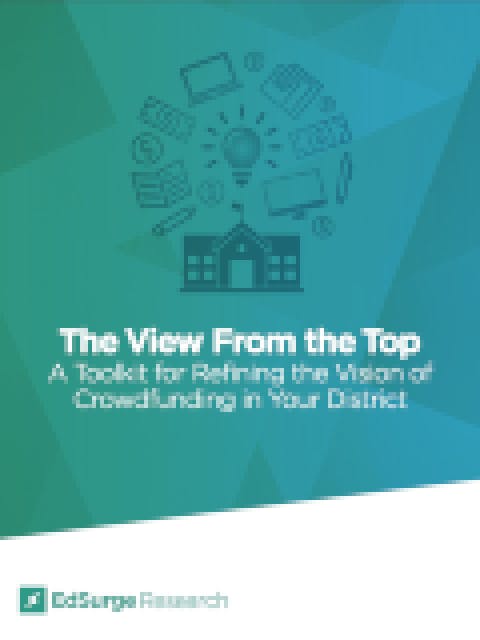Crowdfunding—the practice of raising money from a large number of people, typically by leveraging the internet—seems simple enough. A teacher can set up a campaign in a matter of minutes and receive funding for expenses ranging from basic classroom supplies to enrichment programs. When it works, crowdfunding can be fast money that can get into the hands of people who need it.
The hundreds of millions of dollars raised and projects funded via crowdfunding platforms show that many teachers see value in crowdfunding. But when used in K-12 schools and districts, crowdfunding becomes complex.
EdSurge Research has been digging into these complexities, investigating how crowdfunding works in schools and what platforms promise and deliver to help administrators make informed decisions and develop a clear vision for how to support crowdfunding in their districts.
Successful visions recognize the risks of crowdfunding and address them directly. In interviews and surveys conducted throughout this research project, administrators shared a number of concerns. Some expressed that it is difficult to keep track of the crowdfunding campaigns in their district and therefore, challenging to ensure that campaigns are aligned to district priorities. Many administrators also worried about crowdfunding’s potential to cause inequities between classrooms that receive donations and those that do not.
In addition, many administrators feared that crowdfunding might violate district rules or state laws around giving to public sector employees or raise issues around the ownership of donated materials. Some mentioned that news reports associated with crowdfunding scams caused fear that embracing crowdfunding could put the district at legal risk or could jeopardize the reputation of good schools.
These concerns are legitimate. However, some crowdfunding platforms have designed oversight features specifically to mitigate these risks. Additionally, administrators can develop a vision with complementary policies that inform school and district use of these platforms. This requires administrators to ask tough questions about alignment to school- or district-wide initiatives, equity between classrooms, ownership of donations and financial transparency.
To support teachers in leveraging crowdfunding, while ensuring the right level of oversight, district leaders must deepen their understanding of how crowdfunding platforms work in the context of K-12 education and learn about the potential benefits and limitations of each platform so they can create a thoughtful vision that informs a district-wide policy and implementation plan.








